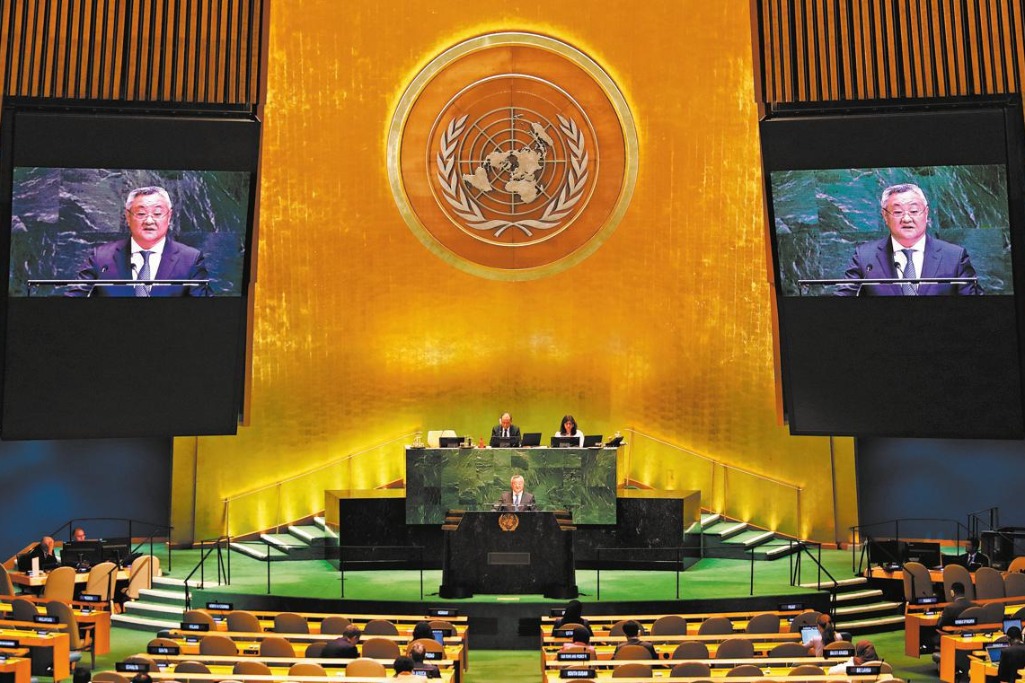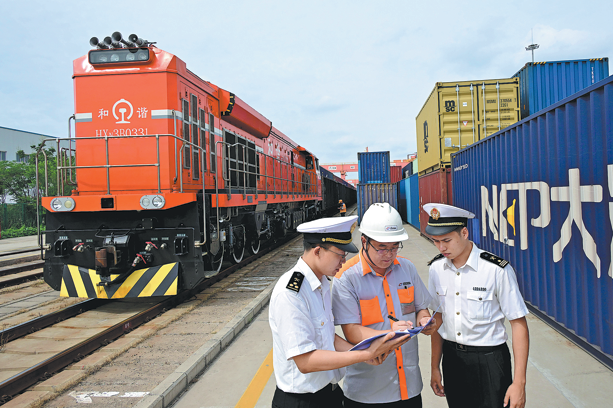Right policies key to healthy recovery

The new decade started with an unexpected and dramatic turn. As countries around the world continue to grapple with the COVID-19 pandemic, the global economy is projected to experience the deepest recession in eight decades, and the outlook remains highly uncertain. In China, growth is projected to slow to 1.6 percent this year-marking the slowest expansion since 1976. While economic activities in China have resumed, the shock will leave lasting impacts on the economy, creating new challenges for China while aggravating pre-existing ones.
Amid this downturn, the pace of China's poverty reduction is expected to slow, reflecting labor dislocation and slower growth in household incomes. Without additional policy measures, 8-20 million fewer people are projected to escape poverty in 2020(based on the World Bank's $5.50 a day poverty line), compared with pre-pandemic projections. Self-employed workers and those in less secure, informal jobs, particularly migrant workers, have been especially hard hit and inequality may rise unless policies mitigate these social impacts.
Debt levels-already elevated before the crisis-h(huán)ave increased sharply and eroded deleveraging gains made over the past two years. The confluence of a collapse of corporate profits, rising unemployment, and lost income has elevated credit risks in Chinese banks, and asset quality will likely deteriorate, especially when regulatory forbearance is tightened.
The shock may also accelerate the secular deceleration of China's medium-term potential growth. Over the last decade China's economy has gradually slowed, reflecting a combination of weaker productivity growth and changing demographics. History suggests that shocks of the magnitude of the COVID-19-induced slowdown will leave the economy scarred. Investment growth will likely decelerate, and some job losses will be permanent because labor-intensive sectors, such as tourism, hospitality and traditional retail are unlikely to fully recover to pre-crisis levels.
Good policies can mitigate some of these impacts. In the short term monetary and financial sector policies will need to remain flexible to ensure abundant liquidity to keep market rates and bond yields low, easing the debt burden on households, enterprises and governments. Declining inflation creates ample room for keeping monetary policy accommodative without triggering inflation risks and/or capital outflows. While ensuring that the flow of credit to the real sector is not impeded, financial risks would need to be managed carefully and policymakers will need to prepare to resume their focus on deleveraging and de-risking the economy once activity has normalized and confidence has been restored.
Given the risks and limitations of a credit-fueled recovery, fiscal policies will need to play a bigger role in supporting the recovery than in past cycles. But fiscal stimulus measures should be designed in a way that contributes to achieving more inclusive and greener growth over the medium term.
In particular, policymakers should aim at closing the gaps in China's social protection coverage, building on the expansion of the system in response to the pandemic. This would not only help protect workers and households from the distress caused by job and income losses but also mitigate lasting weakness in private consumption. And public investment programs should be designed so that they accelerate the transition toward a carbon-neutral, cleaner and greener economy.
Structural policies should focus on enabling the reallocation of resources and facilitating adjustments to post-pandemic economic realities. Businesses may require continued support to prevent a surge in pandemic-induced bankruptcies and job losses.
However, as the economy recovers, financial lifelines to enterprises will need to be unwound. Especially, if corporate distress reflects deeper underlying solvency rather than temporary liquidity issues, including over-leveraged balance sheets, bankruptcy proceedings may be the appropriate strategy. Further market reforms in areas such as land, capital and labor markets as well as steps to improve the business environment would help create conditions for a stronger, more job-intensive recovery.
Reforms to address barriers to labor mobility and to equitable access to social services, including further liberalization of the hukou (household registration) system, and job search and upskilling support for the unemployed would facilitate movement of labor from enterprises and sectors suffering more persistent damage to expanding sectors, enterprises sand locations
Finally, the pandemic has revealed shortcomings in disease surveillance and control. The crisis has increased the urgency of closing these gaps by moving decisively toward stronger multi-sectoral cooperation in mapping and reducing public health risks, active case-based surveillance and timely reporting, improved surge capacity, and strengthened international collaboration.
In sum, China's recovery strategy needs to be forward-looking. The pandemic-induced shock has exposed deeply connected economic, social, and environmental fragilities, making China's objective of rebalancing the economy toward more inclusive, sustainable, and greener growth more urgent than ever. The recovery offers an opportunity to accelerate China's progress toward these goals.
Sebastian Eckardt is the World Bank lead economist for China, Ekaterine Vashakmadze and Luan Zhao are senior economists at the same organization. The views don't necessarily represent those of China Daily.

Today's Top News
- Shameful betrayal of commitments the real threat: China Daily editorial
- Japan PM's remarks delay China-Japan-ROK meeting
- CPC holds symposium to commemorate 110th birth anniversary of Hu Yaobang
- Economy seen on steady track
- Trade-in program likely to continue next year
- Li: SCO can play bigger role in governance






























